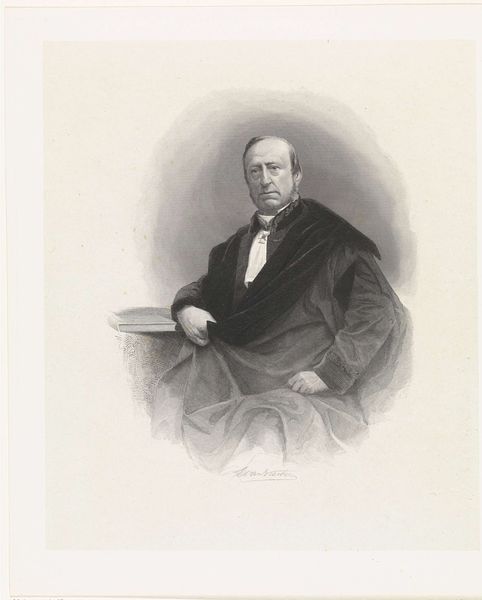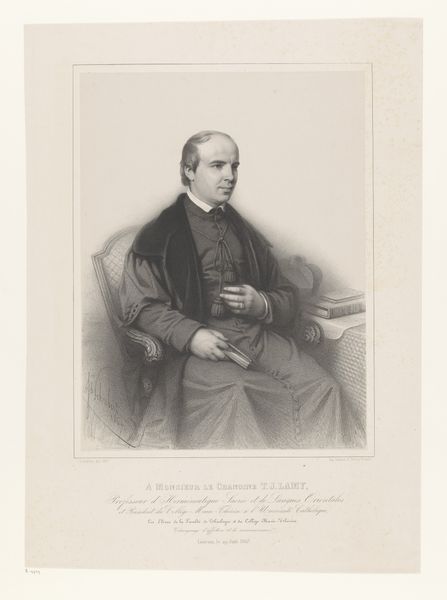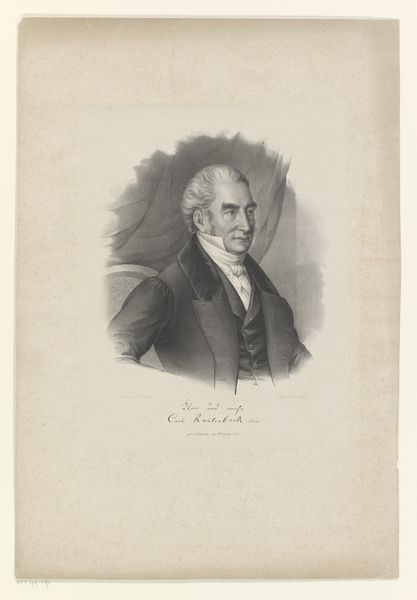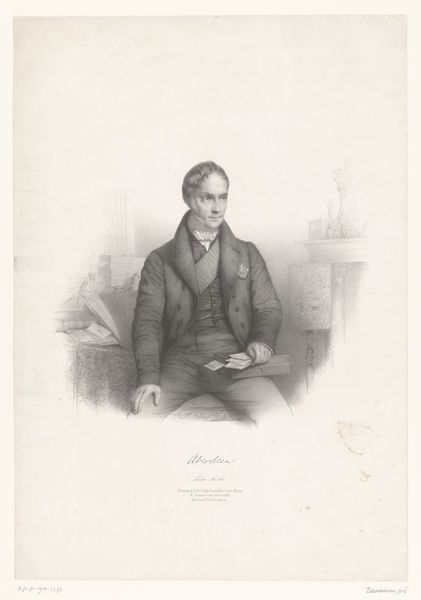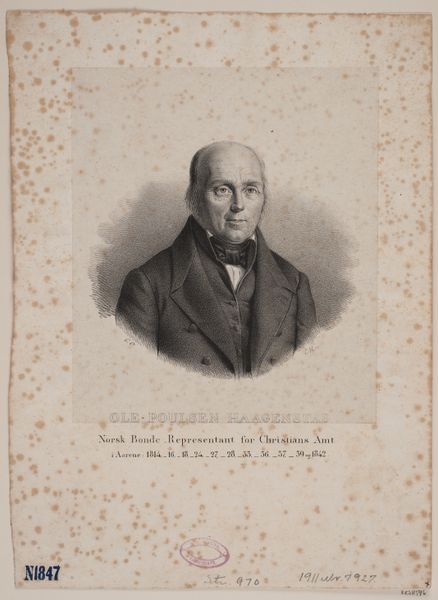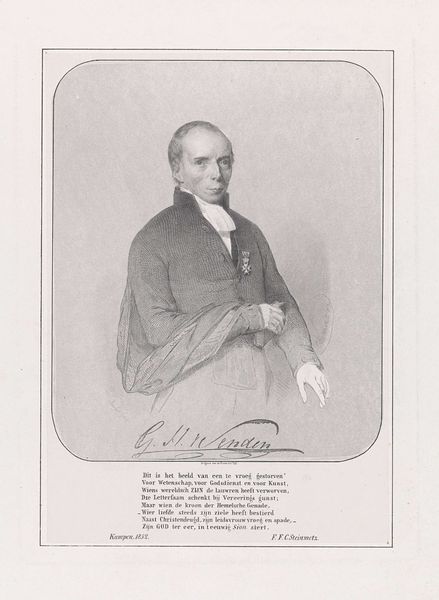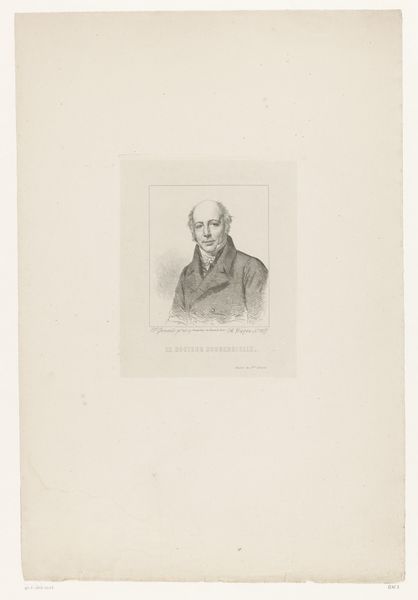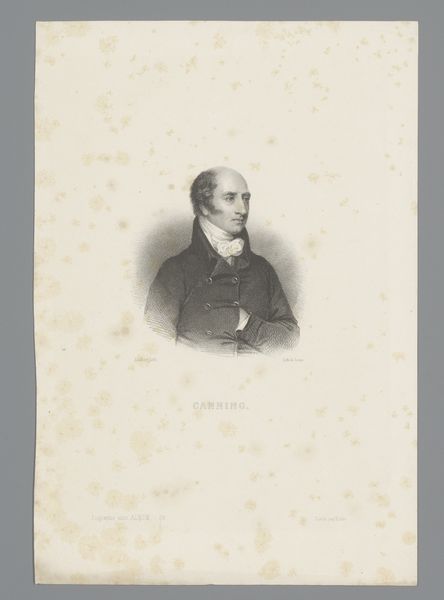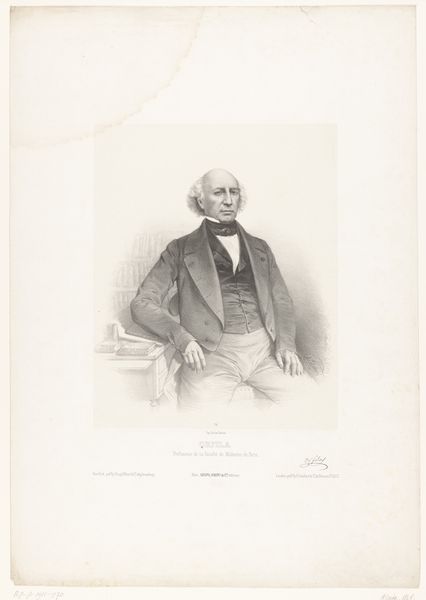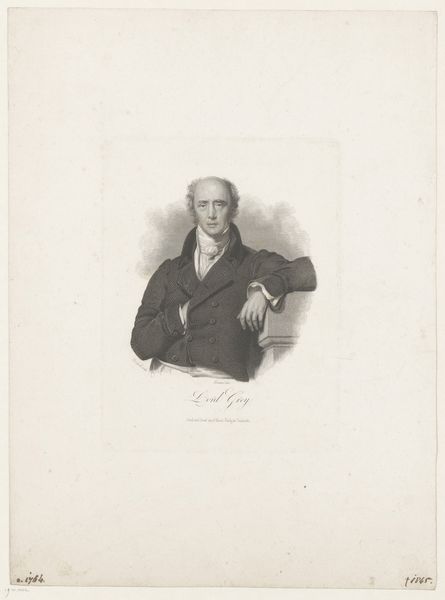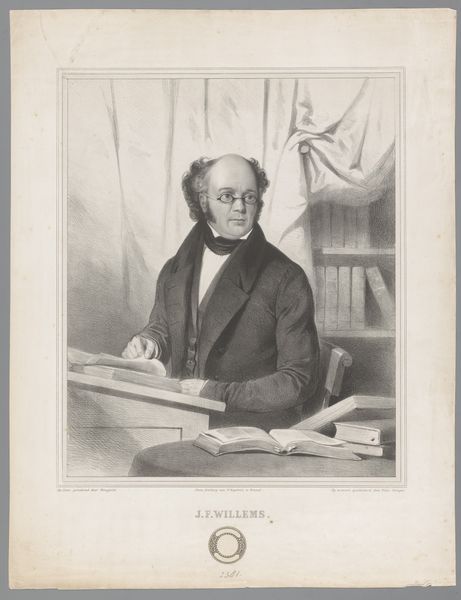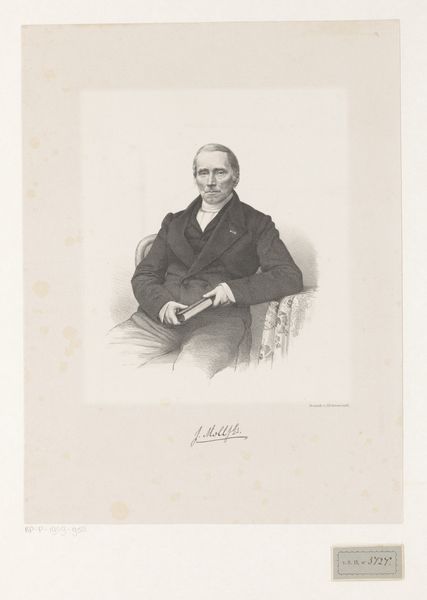
print, engraving
#
portrait
#
neoclacissism
# print
#
historical photography
#
history-painting
#
engraving
Dimensions: height 599 mm, width 436 mm
Copyright: Rijks Museum: Open Domain
Curator: At first glance, there's something quite haunting about this portrait, isn't there? The almost monochromatic palette really lends it a somber gravity. Editor: Indeed. We are looking at a print dating back to about 1831, an engraving by Henri Van der Haert. It's titled "Portret van Willem II, koning der Nederlanden" – Portrait of William II, King of the Netherlands. Curator: The symbolism feels very calculated, particularly how he’s posed. Seated, but with a landscape hinting behind the drapery. It gives him both presence and a connection to the land he governs. There's that little glimpse of the idyllic Netherlands out the window there. What could that imply about cultural and historical context, then and today? Editor: The portrayal here of Willem II offers a studied exercise in legitimizing monarchy during the 19th century. Portraits like these reinforced the idea of a strong, stable ruler at a time when Europe was experiencing massive social and political upheaval. The subtle nod to the landscape roots him in the Dutch national identity. But, the engraver would have likely produced many similar artworks. How unique is this one? Curator: In the details, I'd argue. The expression in his eyes suggests perhaps weariness alongside duty. Engravings could tend to flatten the sitter in comparison to paintings, but here Van der Haert seems to offer glimpses of complexity beneath the kingly presentation, the shadows of something perhaps more vulnerable, making him paradoxically compelling even today. Editor: Do you see a specific kind of statement being made about the role of the monarch? Curator: The imagery evokes a figurehead, but one tethered to reality – a very savvy image to craft amidst a sea of societal changes. As viewers, we bring our own understanding of Dutch history, culture and power relations when faced with this carefully curated image. He wasn’t just royalty, but he was one presented at the exact time the Netherlands sought a national identity. Editor: Ultimately, it serves as a reminder that even seemingly straightforward portraits like this are layered with sociopolitical implications, revealing the careful dance between artist, subject, and the expectations of a nation.
Comments
No comments
Be the first to comment and join the conversation on the ultimate creative platform.
